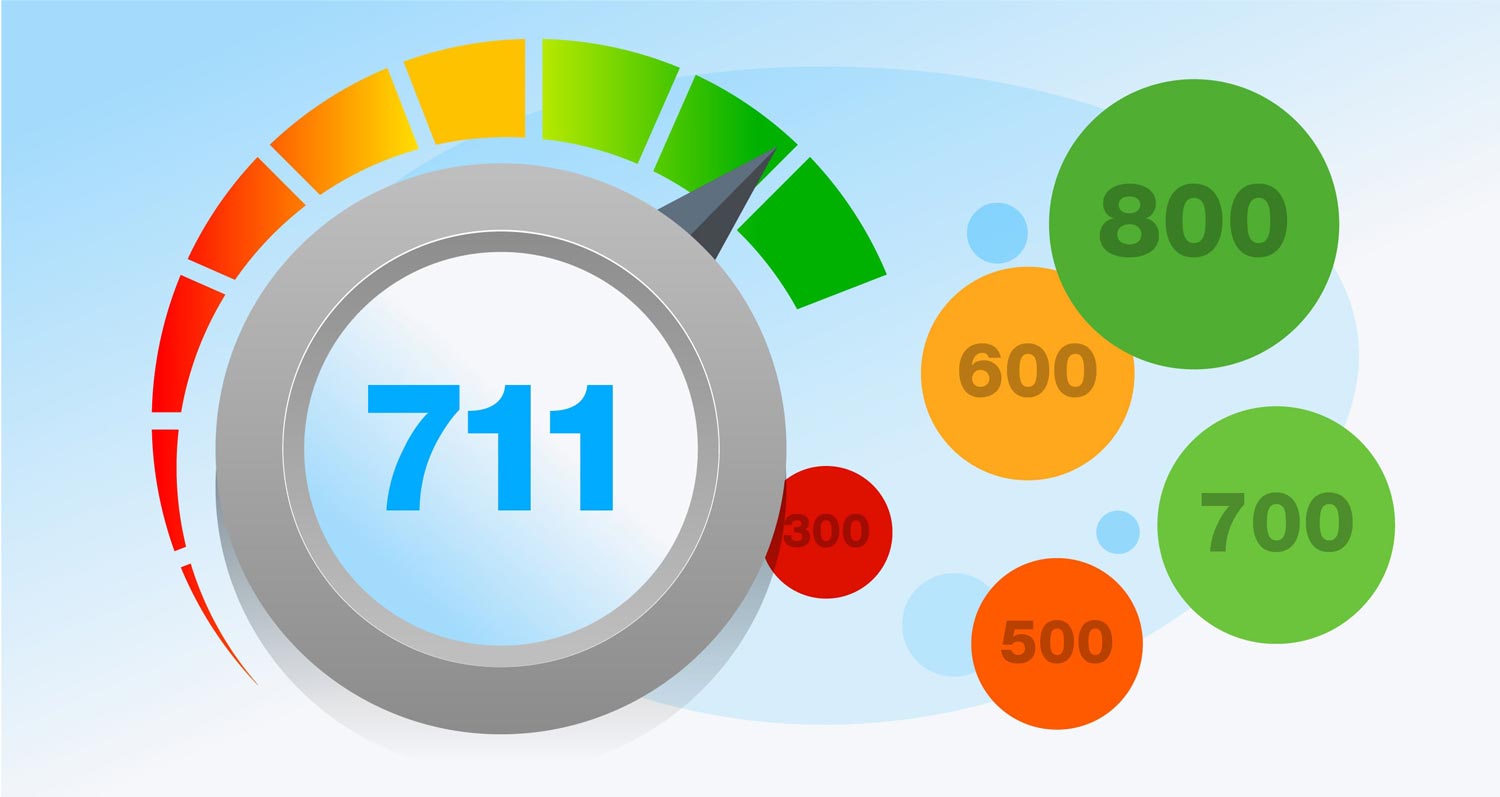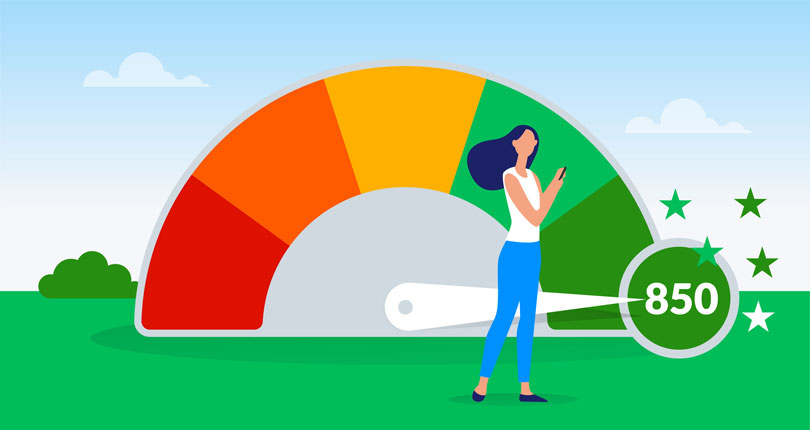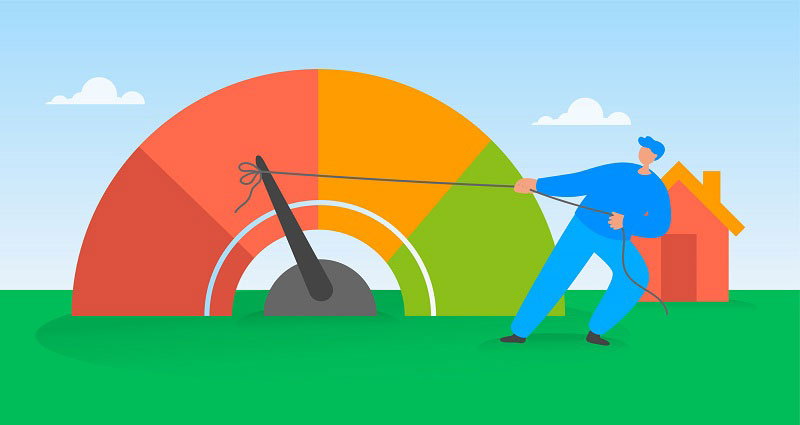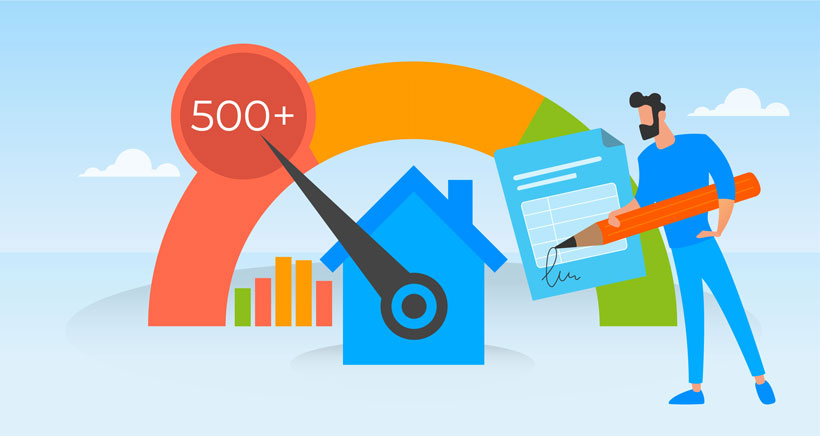Credit Score Ranges & Range Chart
By Michelle L. Black
A credit score ranges from 300-850 typically, and serves as a guide to help lenders and others decide whether to do business with you. Not only do lenders routinely rely on credit scores to determine if they should approve or deny new applications, credit scores also help companies figure out how much to charge. In other words, your credit score can affect the interest rate and fees you pay when you borrow money. Two of the most popular brands of credit scores in the United States are FICO and VantageScore, though each credit score is calculated slightly differently. The majority of U.S. lenders (over 90% to be precise) use FICO Scores in their lending decisions. [1] FICO, “FICO® Scores Are Used By 90% of Lenders” https://www.ficoscore.com/about Most FICO Scores range from 300 to 850, and newer versions of VantageScore credit scores range from 300 to 850 as well.
Credit score range charts
Most credit scores fall between 300 to 850—especially those created by FICO and VantageScore Solutions (the two most popular credit score brands in the United States). Below you’ll find several different types of credit scores along with their numerical ranges. There’s also a general guide to show you how lenders might interpret your score, depending on where it falls on each scale. It should be noted that this information should be used as a guide from a credit score perspective and that other factors like debt-to-income ratio and down payments also impact loan decisions.
Credit score range for FICO
| Base FICO Score |
Category |
What to Expect |
|
Base FICO Score
800-850
|
Category
Exceptional
|
What to Expect
Lenders will likely approve your application and offer you their best rates and terms.
|
|
Base FICO Score
740-799
|
Category
Very Good
|
What to Expect
Lenders are likely to approve you for financing offers featuring competitive rates and terms.
|
|
Base FICO Score
670-739
|
Category
Good
|
What to Expect
Lenders may approve your application, but won't necessarily offer you the best deal.
|
|
Base FICO Score
580-669
|
Category
Fair
|
What to Expect
Lenders may consider you to be a subprime borrower. If you qualify for financing, you're unlikely to receive the best rates and terms.
|
|
Base FICO Score
300-579
|
Category
Very poor
|
What to Expect
Lenders may deny your financing applications. If you qualify, you may face high interest rates, less attractive terms, and additional fees.
|
Source [1] FICO, “FICO® Scores Are Used By 90% of Lenders” https://www.ficoscore.com/about
In addition to the base FICO Scores above, there are industry-specific FICO Scores as well. FICO Auto Scores and FICO Bankcard Scores are two examples. [3] MyFICO, FICO Score 8 and Why There Are Multiple Versions of FICO Scores. https://www.myfico.com/credit-education/credit-scores/fico-score-versions These credit scoring models feature the following credit score ranges:
- FICO Auto Scores: 250-900
- FICO Bankcard Scores: 250-900
Some lenders also pay FICO to create custom scoring models. The credit score ranges on custom models can vary according to the lender’s requests. It can be confusing to realize that different lenders may use different FICO Score versions to analyze your credit reports. But the good news is that higher credit scores on industry-specific and custom scoring models still boil down to the same result. As a borrower, higher scores mean that lenders are more likely to approve your applications and to extend you better offers on financing.
Credit score range for VantageScore
This chart shows the credit score range for the VantageScore 3.0 and 4.0 models.
| Credit Score |
Category |
What to Expect |
| Credit Score
781-850
|
Category
Excellent
|
What to Expect
You're likely to qualify for financing and may receive the best interest rates and terms available.
|
| Credit Score
661-780
|
Category
Good
|
What to Expect
You're likely to qualify and receive competitive offers on financing (i.e. lower rates, etc.).
|
| Credit Score
601-660
|
Category
Fair
|
What to Expect
You may qualify for financing, but as a subprime borrower you probably won't get the best deal a lender has to offer.
|
| Credit Score
500-600
|
Category
Poor
|
What to Expect
It may be difficult to qualify for financing, depending on the lender. When you do qualify, you should expect to pay more.
|
| Credit Score
300-499
|
Category
Very Poor
|
What to Expect
You're unlikely to qualify for financing.
|
Source [4] Experian, “What is a VantageScore Credit Score?” https://www.experian.com/blogs/ask-experian/what-is-a-vantagescore-credit-score/

How to Build Credit When You Have None
Building credit from scratch
can be a lot easier when you
understand where to start
and which mistakes to avoid.
Download our guide
Different credit score ranges and how they affect you
When your credit score falls in a lower range, borrowing money can be a challenge. If you are able to qualify for financing at a lower credit score range, bad credit comes at a high cost in terms of the interest rates you’ll pay.
Moving up into a higher credit score range can make a meaningful difference in your financial life. Some benefits of good credit include that it could lift your chances of qualifying for the loans or credit cards you want. It may also make it easier to lease a home or apartment. And, of course, a higher credit score range could save you money in the form of lower interest rates and lower insurance premiums.
Below is a look at the different FICO Score ranges and a deeper look at the impact your credit score range might have when you apply for financing. Although these ranges apply to FICO Scores, they can be a helpful guide when evaluating your VantageScore credit scores as well.
Exceptional Scores (800-850)
When you earn a FICO Score between 800 and 850, your credit score is well above average. An exceptional FICO Score tells lenders that you are a responsible borrower with an excellent credit management track record. You most likely have a long credit history, no late payments, low credit card utilization, and you don’t apply for new credit in an excessive way.
At this credit score range, qualifying for new loans (e.g., mortgages, auto loans, personal loans, etc.), credit cards, and other financial products should generally be easy from a credit score perspective. But keep in mind that lenders consider more than just your credit score when you apply to borrow money.
There’s a good chance lenders will offer you their best terms and lowest interest rates when you have an exceptional credit score. Your credit-based insurance scores may also be in great shape which has the potential to help you secure lower auto insurance premiums (depending on your state of residence). These benefits could potentially save you thousands of dollars per year, and much more over the course of your lifetime.
Very Good Scores (740-799)
Your FICO Score is above average if it falls between 740 and 799. This range indicates to lenders that you’re a responsible borrower and a low credit risk. In other words, you are likely to repay the money you borrow as promised.
With a very good credit score, you should be able to qualify for many types of financing. Lenders may also be willing to extend competitive interest rates and loan terms in an effort to win your business. However, you might not be able to qualify for the lowest rates available depending on a lender’s credit-tiered pricing criteria.
Good Scores (670-739)
If your FICO Score falls between 670 and 739 you have a credit score that is at or near average. As of the third quarter of 2023, the average FICO Score in the United States was 714. [6] Experian, “What is the Average Credit Score in the U.S.” https://www.experian.com/blogs/ask-experian/what-is-the-average-credit-score-in-the-u-s/
Most lenders will consider you to have a good credit score in this range. So, you’re still likely to qualify for many types of financing. However, you could pay more to borrow money since lenders may not offer you their best rates and terms available at this credit score range.
Fair Scores (580-669)
When your FICO Score is between 580 and 669, you have a score that’s lower than the average U.S. consumer. At this credit score range, lenders may classify you as a subprime borrower.
Some lenders may decline your applications for loans, credit cards, and other forms of financing when you have a fair credit score. If a lender does approve your application, you should expect your interest rate (and potentially fees) to be higher than you could secure with a better credit rating. Over time, higher interest rates could cost you hundreds, thousands, or even tens of thousands of dollars depending on the terms of your loan or credit card.
Very Poor Scores (300-579)
A FICO Score between 300 and 579 is considerably lower than the average U.S. consumer. With a FICO Score in the very poor range, you’re likely to have a hard time qualifying for many types of traditional financing. And when a lender does approve your application for new credit, you may have to accept the least attractive terms, interest rates, and fees available. You may also need to put down deposits when you open new utility accounts or cellular phone services.
If you’re looking to rebuild your credit, you may want to consider some credit building financial products. Credit builder loans and secured credit cards, for example, are two types of accounts that could potentially benefit you over time if you manage them responsibly. Additionally, these products tend to have more lenient approval criteria than traditional credit because of the way they work. As a result, you should find them easier to qualify for when you have very poor credit scores.
No Credit Scores
To qualify for a FICO Score, your credit report must meet certain criteria. Your report must have at least one tradeline (e.g., loan, credit card, etc.) that has been open for at least six months and at least one tradeline that’s been reported to the credit bureau in the last six months. (A single account can satisfy both of these criteria.) There can also be no indication on your credit report that you are deceased.
If you can’t satisfy the criteria above, you will have no credit score. A study by the Consumer Financial Protection Bureau (CFPB) found that some 45 million American consumers have no credit scores either because they don’t have a credit file (26 million consumers) or because the credit files they do have don’t qualify for a credit score.
With no credit scores, it can be difficult to borrow money—especially at affordable rates and terms. Many lenders may be hesitant to approve your applications for financing since you don’t have a previous credit management track record that they can review.
Like consumers with subprime credit scores or very low poor credit scores, you may want to consider establishing some good positive credit history to lift your credit score range. Secured credit cards and credit builder loans are two options that may be a good fit in this credit score range since they offer easier-to-satisfy approval criteria than most traditional forms of credit.
How much money you could save by being in a higher credit score range
FICO provides a Loan Savings Calculator that shows how your credit score range can impact the price you pay for various loans, such as mortgages and auto loans. Sometimes, moving up even one credit score range can make a meaningful difference in both your monthly and overall cost of borrowing.
Here is a hypothetical example of the money a higher credit score range might save you on a $300,000 mortgage (30-year, fixed-rate).
Loan Savings Potential
| FICO score range |
Mortgage APR |
Monthly payment |
Total interest (over 30 years) |
| FICO score range 620-639 |
Mortgage APR 8.254% |
Monthly payment $2,255 |
Total interest (over 30 years) $511,672 |
| FICO score range 640-659 |
Mortgage APR 7.708% |
Monthly payment $2,141 |
Total interest (over 30 years) $470,593 |
| FICO score range 660-679 |
Mortgage APR 7.278% |
Monthly payment $2,052 |
Total interest (over 30 years) $438,803 |
| FICO score range 680-699 |
Mortgage APR 7.064% |
Monthly payment $2,009 |
Total interest (over 30 years) $423,175 |
| FICO score range 700-759 |
Mortgage APR 6.887% |
Monthly payment $1,973 |
Total interest (over 30 years) $410,349 |
| FICO score range 760-850 |
Mortgage APR 6.665% |
Monthly payment $1,929 |
Total interest (over 30 years) $394,395 |
Source [5] MyFICO, “Estimate Your Loan Savings Using Credit Score Calculator” https://www.myfico.com/credit-education/calculators/loan-savings-calculator/
In the most extreme example above, moving from a credit score range of 620-639 up to 760-850 could help you save:
- $117,277 in overall interest paid
- $326 per month
Remember that every lender decides which credit score it will use to evaluate your creditworthiness. FICO Scores remain popular among lenders, but some might use a VantageScore credit score to evaluate your creditworthiness instead.
In addition to selecting a preferred credit score, lenders also choose how to interpret the scores they use. So, while the ranges in this article are a good guide, they may not represent the exact credit score range parameters you’ll encounter when you apply for financing. Nonetheless, the following rule of thumb holds true. The higher your credit score climbs, the better your odds of qualifying for an attractive loan or credit card offer.
Credit reports and score ranges: Equifax, TransUnion, and Experian
When you apply for a loan or credit card, a lender may check your credit report and an associated score from one or more of the major credit bureaus — Equifax, TransUnion, or Experian. But the credit score range doesn’t vary based on the credit bureau from which the lender purchases your report. Rather, the credit score range is determined by the scoring model the lender uses.
For example:
- 300-850: This is where your credit score will fall if a lender uses most FICO Scores or a VantageScore 3.0 or 4.0 credit scoring model to evaluate any of your three credit reports.
- 250-900: This is where your credit score will fall if a lender uses a FICO Bankcard or FICO Auto scoring model to assess your creditworthiness.
Credit score differences by credit bureau
It is possible to receive a different credit score from each credit bureau, even if the lender uses the same scoring model to analyze your three reports. Consider how a mortgage application works. When you apply for a home loan, a lender will review all three of your credit reports and scores. The government-sponsored enterprises (GSEs)—Fannie Mae and Freddie Mac—require this thorough type of tri-bureau credit check.
Yet even though the lender may check your Equifax, TransUnion, and Experian credit reports on the same day and use the same scoring model for each, you’ll probably get three different credit scores. Usually, your three scores would fall into the same credit score range, but it is possible for there to be some differences here too. The reason your credit scores can differ between credit bureaus, even if the same scoring model is used, is because your credit reports from the three credit bureaus aren’t identical. For example, your Equifax report might list an extra account that’s missing from TransUnion and Experian. Or perhaps the credit utilization ratio one of your credit cards is being reported differently on your Experian credit report than it is on the other two. If the information on your credit reports doesn’t match, you shouldn’t expect your credit scores to match either.
The number of people in each credit score range
When it comes to credit scores, it can be interesting to see how you measure up to the rest of the population. Knowing how your credit score compares to others may leave you feeling pretty confident, or it might reveal that you have some catching up to do.
Below is a look at the percentage of people in each of the five credit score ranges. There is a separate chart for FICO Scores and VantageScore credit scores.
FICO Credit Score Range Distribution
| FICO Score Range |
Percentage of Consumers |
| FICO Score Range
Exceptional (800-850)
|
Percentage of Consumers
21.2%
|
| FICO Score Range
Very Good (740-799)
|
Percentage of Consumers
28.1%
|
| FICO Score Range
Good (670-739)
|
Percentage of Consumers
22%
|
| FICO Score Range
Fair (580-669)
|
Percentage of Consumers
16.6%
|
| FICO Score Range
Very Poor (300-579)
|
Percentage of Consumers
12.1%
|
Source [6] Experian, “What is the Average Credit Score in the U.S.” https://www.experian.com/blogs/ask-experian/what-is-the-average-credit-score-in-the-u-s/
VantageScore Credit Score Range Distribution
| VantageScore Credit Score Range |
Percentage of Consumers |
|
VantageScore Credit Score Range
Excellent (781-850)
|
Percentage of Consumers
23%
|
| VantageScore Credit Score Range
Good (661-780)
|
Percentage of Consumers
38%
|
| VantageScore Credit Score Range
Fair (601-660)
|
Percentage of Consumers
13%
|
| VantageScore Credit Score Range
Poor (500-600)
|
Percentage of Consumers
21%
|
| VantageScore Credit Score Range
Very Poor (300-499)
|
Percentage of Consumers
5%
|
Source [7] Experian, “What is a VantageScore Credit Score?” https://www.experian.com/blogs/ask-experian/what-is-a-vantagescore-credit-score/
Here are a few more interesting statistics about U.S. credit score ranges.
- 71.3% of consumers in the United States have a FICO Score that falls into the “Good” range or better.
- 61% of consumers in the United States have a VantageScore credit score that falls into the “Good” range or better.
- Only 28.7% of U.S. consumers had a Fair or Poor credit score on the FICO Score range (below 670).
Factors that affect your credit score range
There are many factors that can affect your credit score and your credit score range. These factors break down into five categories of information (found on your credit report).
- Payment history—35% of your FICO Score—looks at whether you have late payments on your credit reports. If you do have payment delinquencies, the severity and frequency of these will affect your credit range.
- Amounts owed—30% of your FICO Score—primarily considers your credit utilization ratio. When your credit report shows that you’re using a bigger percentage of your available credit card limit, it could cause credit score damage that might move you to a lower credit score range. Another factor that matters here is your number of accounts with outstanding balances—fewer is better.
- Length of credit history—15% of your FICO Score—examines factors like the average age of accounts on your credit report and the age of your oldest and newest accounts, among others. The older your accounts, the better the impact should be upon your credit score range.
- Types of credit used—10% of your FICO Score—assesses the variety of accounts that appear on your credit report. A combination of account types such as revolving (credit cards) and installment (loans) is ideal.
- New credit—10% of FICO Score—considers factors such as how often you apply for new credit. Too many credit inquiries in a short period of time could have a negative impact on your credit rating range.
The bottom line
It may not seem like a few points makes much difference when it comes to your credit scores. However, if those few points move you up (or down) to a different credit score range, then the impact that change has on your financial life could potentially be meaningful.
As you have seen from the examples above, a better credit score range could mean the difference between an approval or a denial of your loan application. Having a credit score in a higher range may also help you get better rates and terms from lenders, making it more affordable to borrow money.
Sources:







